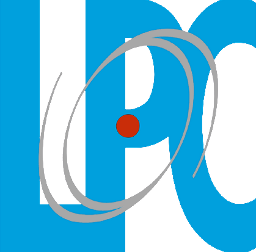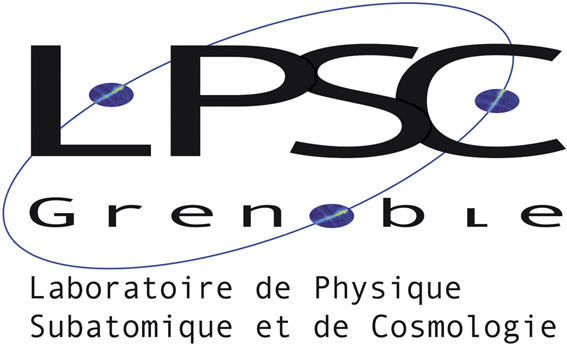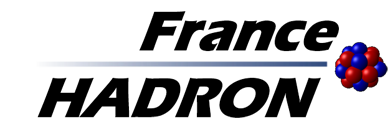Lyon - FHARA
The node of France HADRON localized around Lyon is actually a large Rhône-Alpes-Auvergne node that was made from the 2000s through the development of the ETOILE project in Lyon. The project was to promote the construction of a national cancer treatment center with carbontherapy . Very early in the history of this project, the need to unite a dynamic research around hadrontherapy caught the attention of its promoters. A dozen of scientist teams, mostly academic, gathered to develop a comprehensive research program: the Regional Programme of Research in Radiation Therapy (PRRH). The sixty participants being distributed from Clermont-Ferrand to Grenoble via Saint-Etienne and Lyon. The Rhône-Alpes region has funded this research program, starting with the ETOILE-center project, more than € 4 million in 14 years through two successive contracts Plan Etat-Région from 2000 to 2014.

The success and the attractiveness of the PRRH and the emergence of other hadrontherapy projects in France such as Asclepius project and ARCHADE in Caen, led to consider a national gathering of these research efforts. It is natural that the Group of Sanitary Cooperation ETOILE, led by Professor Jacques Balosso - who had the task of building the Centre ETOILE - took the initiative in 2010 to file a national infrastructure project in the health and biotechnology part of tender PIA ("Grand Loan") to structure and finance the business combination. Thus the PRRH and the ETOILE-center project were the initiators of France HADRON. In addition, with the abandonment of the proposed ETOILE-Centre, following the absence of regal decision of the state, only now remains the France HADRON infrastructure, incorporating almost all of the forces of hadrontherapy in France.
Since early 2015, the Node Rhône-Alpes Auvergne in France HADRON, who took the name Farah is represented in France HADRON by the Institute of Nuclear Physics of Lyon (IPNL) that saw the birth of the ETOILE project in 1999-2000.
Contact : Jacques Balosso
![]() Institute of Nuclear Physics of Lyon activities are to study the properties of subatomic constituents of matter and their interactions. Research topics cover a large range as they are related to particle physics and astroparticle, nuclear material and ion interactions / aggregate-material. From these activities dedicated to advancing knowledge of the matter at the atomic and subatomic level, IPNL has developed from the beginning an important research in multidisciplinary areas affecting life sciences, environment and R&D for innovative detectors: biomedical imaging, micro-pixel silicon sensors, preparation with "Rhône-Alpes" doctors of an hadrontherapy center for the treatment of cancerous tumors with carbon ions, radiological measurements accredited to the environment. The IPNL expertise in ionizing radiation is federed in ANAFIRE plateform and more specifically with the accelerator Van Der Graff.
Institute of Nuclear Physics of Lyon activities are to study the properties of subatomic constituents of matter and their interactions. Research topics cover a large range as they are related to particle physics and astroparticle, nuclear material and ion interactions / aggregate-material. From these activities dedicated to advancing knowledge of the matter at the atomic and subatomic level, IPNL has developed from the beginning an important research in multidisciplinary areas affecting life sciences, environment and R&D for innovative detectors: biomedical imaging, micro-pixel silicon sensors, preparation with "Rhône-Alpes" doctors of an hadrontherapy center for the treatment of cancerous tumors with carbon ions, radiological measurements accredited to the environment. The IPNL expertise in ionizing radiation is federed in ANAFIRE plateform and more specifically with the accelerator Van Der Graff.
Contact: This email address is being protected from spambots. You need JavaScript enabled to view it.
As the IPNL, France HADRON teams of the Farah node are:
 The Team 3738 of Lyon-Sud, which develops the works on radiobiology with hadrons, in particular the study of the factors and markers responsible of the tumor radioresistance . This laboratory houses a Xray irradiator.
The Team 3738 of Lyon-Sud, which develops the works on radiobiology with hadrons, in particular the study of the factors and markers responsible of the tumor radioresistance . This laboratory houses a Xray irradiator.
Contact: Claire Rodriguez-Lafrasse
 The Laboratory of Physics of Particules of Clermont-Ferrand develops imaging approaches including online quality-control of radiation based on positron emitters. This laboratory was the source of the GDR MI2B dedicated to the biomedical imaging. There is also the multimodal platform PAVIRMA irradiation.
The Laboratory of Physics of Particules of Clermont-Ferrand develops imaging approaches including online quality-control of radiation based on positron emitters. This laboratory was the source of the GDR MI2B dedicated to the biomedical imaging. There is also the multimodal platform PAVIRMA irradiation.
Contact: Gerard Montarou
![]() CREATIS is a UMR: CNRS, INSA, INSERM, contributing in particular by its medical imaging and modeling activities of the path and the dose deposition of charged particles.
CREATIS is a UMR: CNRS, INSA, INSERM, contributing in particular by its medical imaging and modeling activities of the path and the dose deposition of charged particles.
Contact: Jean Michel Létang
![]() The LIRIS which is one of the computer-science laboratories of the University Claude Bernard Lyon 1. The LIRIS contributes to the development of movement patterns and organ-deformation models in order to optimize the dynamic definition of target volumes.
The LIRIS which is one of the computer-science laboratories of the University Claude Bernard Lyon 1. The LIRIS contributes to the development of movement patterns and organ-deformation models in order to optimize the dynamic definition of target volumes.
Contact: Jean Michel Moreau, Behzad Shariat
 The Cancer Research Center of Lyon (Centre Léon Bérard) brings together an important part of the research, including translational and science transfert, in oncology. It contributs in France HADRON for radiobiology aspects of healthy tissue and human radiosensitivity.
The Cancer Research Center of Lyon (Centre Léon Bérard) brings together an important part of the research, including translational and science transfert, in oncology. It contributs in France HADRON for radiobiology aspects of healthy tissue and human radiosensitivity.
Contact: Nicolas Foray
 The team Physic for Medical Application from the Subatomic Physics Laboratory and Cosmology (Grenoble) focuses on detector development for the X or particulate radiations. This laboratory has notably been a partner of the Italian center CNAO during its construction.
The team Physic for Medical Application from the Subatomic Physics Laboratory and Cosmology (Grenoble) focuses on detector development for the X or particulate radiations. This laboratory has notably been a partner of the Italian center CNAO during its construction.
Contact: Denis Dauvergne
Events
June-5th 2015: WP4 meeting in Lyon
May-11th 2015 : Steering-commitee meeting in Paris
April-15th 2015: WP1 meeting in Orsay
Module-Workshops and international meeting
May 18-23 2015: 54th PTCOG - Manchester Grand Hyatt, San Diego, California







